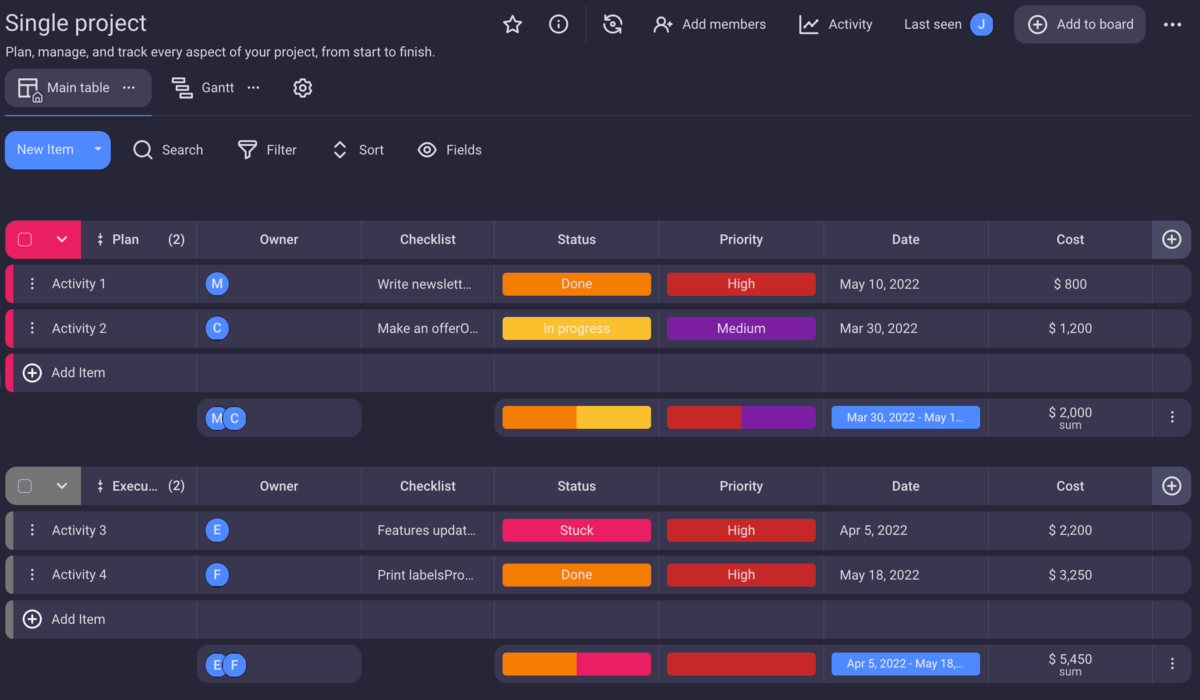If you’re planning to use Scrum on your next project, you should learn more about Scrum Values first, as they represent the foundation of the Scrum project management framework.
As Ken Schwaber and Jeff Sutherland explain in The Scrum Guide, the successful use of Scrum depends on people becoming more proficient in living the 5 Scrum Values.
Keep reading to learn what these values are, how they differ from the Scrum principles, and why they are so important.
So, let’s dive in.

- The 5 Scrum Values include commitment, focus, openness, respect, and courage.
- Scrum Values are internal guidelines that should be followed by each member of the Scrum Team to ensure project success.
- Scrum Values give direction to the Scrum Team with regard to their work, actions, and behavior.
- Scrum principles are specific guidelines for applying Scrum, whereas the Scrum Values represent the more general guidelines or a mindset adopted by the Scrum Team.
What are the 5 Scrum Values?
The success of any Scrum process depends on the 5 core values — commitment, focus, openness, respect, and courage.
The Scrum Values are internal guidelines that should be followed by each member of the Scrum Team throughout the project.
As explained in The Scrum Guide, values give direction to the Scrum Team with regard to their work, actions, and behavior.
Let’s discuss these values in more detail.
Value #1: Commitment
Each Scrum Team member should commit to achieving common goals and supporting each other.
Our source, Abhay Talreja, Senior Consultant at Deloitte, an Agile guru, and a Certified Scrum Master, shares an example of a situation where the commitment value comes to the forefront:

“A Scrum Team is usually self-sufficient in completing tasks in the Sprint. There are times when some of the tasks require new skills that need to be learned. A team shows commitment when they put in the necessary time and effort to complete their task, even if it requires learning new skills or adjusting their approach to implementing something.”
💡 Plaky Pro Tip
You can manage your Scrum team much better with the help of the right Scrum tool. Explore pros and cons of the top 12 Scrum tools in the following article:
Value #2: Focus
Each Scrum Team member should remain focused on the work of the Sprint to make optimal progress toward the Sprint Goal.
Abhay shares an example of a situation where the focus value is vital:

“When working with the functional team or the Product Owners, sometimes a task may get additional details or a change in approach during the Sprint. Any extra work identified needs to get into the Backlog and not be part of the Sprint, as this will sidetrack the team’s focus.”
Value #3: Openness
The Scrum Team and all the stakeholders involved in the project should stay open about their work and the challenges with performing said work.
The openness value is in line with one of the Scrum Pillars — transparency. The team and stakeholders agree to visibility and honesty in everything that happens throughout a project.
This visibility further allows for inspection and adaptation when performing the work, which ultimately leads to a successful project.
Abhay explains that the amount of transparency may impact both the current and future assignments in a Sprint, as well as other team members:

“The biggest problem I have seen with being transparent and Developers holding back information is that they usually feel they can figure it out. This usually ends up being a pilled-on activity towards the end of the Sprint and causing last-minute struggles.”
In Abhay’s opinion, openness is a crucial value as it encourages speaking honestly about potential issues:

“While all these values are fundamental, openness is crucial because it encourages team members to bring up issues and risks promptly and honestly. Usually, these end up being the blind spots for the team. Having an open perspective on tasks, issues, and risks can lead to better collaboration, problem-solving, and, ultimately, a more successful project.”
Value #4: Respect
Scrum team members should respect each other as the presence and absence of respect among them impact how well they communicate as a team.
Abhay highlights that respect usually showcases when certain disagreements occur, like in the following example:

“There are always a couple of implementation approaches for any task. There is sometimes disagreement between team members on the approach. The best way is to express their viewpoint in a way that respects the other person’s perspective and expertise. The view need not challenge the approach but help to shape the approach.”
Value #5: Courage
Scrum team members should have the courage to do the right thing when faced with challenges.
Also, courage implies the readiness to make changes and sometimes even break the rules and routines if that’s what the project calls for.
According to Abhay, displaying courage may in some cases even feel a bit uncomfortable, but it is necessary for the betterment of a project, as in the following example:

“[A situation in which being courageous feels a bit uncomfortable] is a common thing we have seen on projects where the client or the stakeholders usually request features that might not be part of the design. A Product Owner can demonstrate courage to push back against the stakeholder’s request, which would negatively impact the project’s timeline.”
💡 Plaky Pro Tip
Have you ever been asked by stakeholders to do more work than you agreed on? Read about scope creep in the following guide:
Scrum Values vs Scrum principles
Scrum principles are more specific guidelines for applying Scrum, whereas the Scrum Values represent the more general guidelines or a mindset adopted by the Scrum Team.
According to A Guide to the Scrum Body of Knowledge by SCRUMstudy, Scrum principles should remain intact throughout the project to ensure that the Scrum framework is implemented properly.
Here are the 6 Scrum principles:
- Empirical process control — the core philosophy of Scrum is based on 3 pillars — transparency, inspection, and adaptation.
- Self-organization — team members who take ownership of their work deliver significantly greater value, resulting in better team buy-in, and a more innovative and creative project environment.
- Collaboration — project management is a shared value-creation process and team members work together to deliver the best results.
- Value-based prioritization — Scrum focuses on delivering maximum business value and should prioritize tasks accordingly.
- Time-boxing — time should be used to help effectively manage project planning and execution.
- Iterative development — adaptability and being open to change help achieve better results and higher customer satisfaction.
💡 Plaky Pro Tip
To learn more about general project management principles, check out our guide on this topic, or head on over to our glossary of terms to dive deeper into other project management terminology.:
How Plaky helps the Scrum Team hold onto the Scrum Values
If everyone involved in the Scrum process stays committed, focused, open, respectful, and courageous throughout the project, it is more likely to succeed.
The Plaky project management tool increases the transparency of tasks and allows each team member to stay aware of what other team members are currently working on. This enables team members to exercise openness and share feedback when needed.

With Plaky, the chances of misunderstandings are smaller, and each Scrum team member will remain fully committed and focused on their task.
Start managing your Scrum process more transparently with Plaky and immediately improve your Scrum team’s cross-collaboration skills. Sign up today!
How we reviewed this post: Our writers & editors monitor the posts and update them when new information becomes available, to keep them fresh and relevant.
